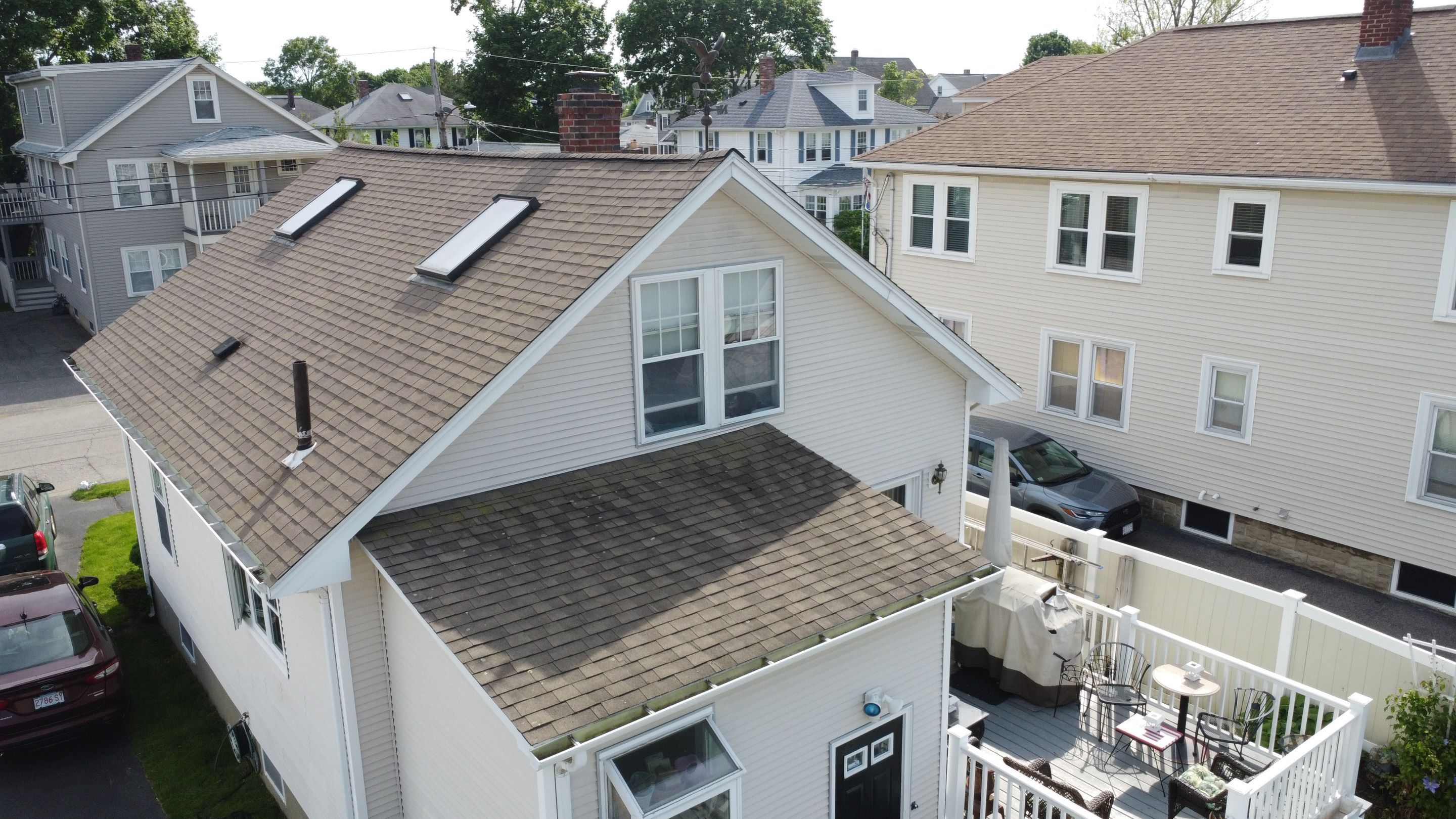Blogs

Painting Stucco with Elastomeric Paint | Step-by-Step Guide
Stucco homes are a hallmark of architectural beauty across many regions of the USA, from the sun-drenched Southwest to the humid South. Known for its distinct texture and Mediterranean appeal, stucco is a durable exterior finish. However, like any exterior material, stucco is susceptible to the elements – especially temperature fluctuations and moisture, which can lead to hairline cracks and water intrusion. When it's time to repaint your stucco, opting for elastomeric paint isn't just a cosmetic choice; it's a strategic upgrade that offers superior protection and longevity. Masterpiece Painter explains why this specialized coating is the ultimate solution for your stucco home.
Why use elastomeric paint on stucco?
Elastomeric paint is uniquely suited for stucco surfaces due to its inherent properties that directly address stucco's vulnerabilities:
Superior Crack Bridging: Stucco, being a rigid material, naturally develops minor hairline cracks over time due to building settlement, thermal expansion and contraction, or even minor impacts. Traditional acrylic paints will simply crack over these imperfections, requiring frequent touch-ups. Elastomeric paint, with its incredible elasticity (stretching up to 300% or more), effectively bridges and seals these hairline cracks (typically up to 1/16" or 1/8" wide, depending on the product), preventing them from reappearing through the paint film.
Exceptional Waterproofing: Stucco is inherently porous. This porosity means it can absorb water, which can lead to issues like efflorescence (white mineral deposits), mold, mildew, and even structural damage if moisture penetrates the wall assembly. Elastomeric paint forms a continuous, waterproof membrane over the stucco surface, acting as a robust barrier against rain, humidity, and moisture intrusion, crucial for homes in wet climates like the Pacific Northwest or humid Southern states.
Breathability: While waterproof to liquid, high-quality elastomeric paints are often vapor permeable (breathable). This means they prevent external water from entering but allow any moisture vapor trapped within the wall cavity to escape. This "breathing" ability is vital for stucco and masonry, as it prevents blistering, peeling, and delamination of the paint caused by internal moisture pressure.
Enhanced Durability and Longevity: The thick, flexible film of elastomeric paint provides exceptional resistance to UV degradation, chalking, chipping, and peeling. This translates to a significantly longer lifespan compared to conventional exterior paints, often lasting 10-20 years or more, reducing the frequency and cost of repainting your stucco home.
Conceals Imperfections: Its high build helps to smooth out and conceal minor surface irregularities and texture variations in the stucco, contributing to a more uniform and refreshed appearance.
Surface prep is crucial for adhesion
The success and longevity of an elastomeric paint job on stucco hinge almost entirely on meticulous surface preparation. Skipping steps here will undermine the paint's performance and void its benefits.
Thorough Cleaning:
Remove All Loose Debris: Start by scraping off any loose, peeling, or chalking existing paint.
Pressure Washing: This is typically essential for stucco. Use a pressure washer with an appropriate tip and pressure (often 1500-2500 PSI, but adjust based on stucco condition to avoid damage) to thoroughly clean the surface. Remove all dirt, grime, mold, mildew, efflorescence (white powdery deposits), and any loose stucco or previous coatings.
Mildew/Algae Treatment: For areas with heavy mildew or algae growth, use a dedicated exterior cleaner or a solution of bleach and water (1 part bleach to 3 parts water) applied with a sprayer, allowed to dwell, then thoroughly rinsed.
Rinsing: Rinse the stucco completely until no cleaning solution, soap residue, or dislodged debris remains. This may take several passes.
Allow for Complete Drying: This step cannot be overstated. Stucco is porous and retains moisture. The surface must be bone dry before applying elastomeric paint.
Drying Time: Depending on humidity, temperature, and stucco thickness, allow at least 2-3 sunny, dry days after pressure washing. In humid climates (e.g., Florida, Gulf Coast), this could extend to 4-5 days or more.
Moisture Meters: For professionals like Masterpiece Painter, using a moisture meter is standard practice to confirm the stucco's moisture content is within acceptable limits (usually below 15%).
Repair All Cracks and Damage:
Identify Cracks: Inspect the entire stucco surface for cracks.
Hairline Cracks (up to ~1/8"): Elastomeric paint is designed to bridge these. However, some professionals prefer to pre-fill the widest hairline cracks with an elastomeric caulk for added reinforcement.
Larger Cracks (>1/8") and Structural Damage: These must be properly repaired with a flexible stucco patch or elastomeric patching compound specifically designed for masonry. Allow repairs to cure fully according to manufacturer directions.
Delamination/Spalling: Address any areas where stucco is delaminating or spalling from the substrate. These areas need to be chipped out and re-patched.
Priming (Often Required):
Check Manufacturer's Specs: Always refer to the elastomeric paint manufacturer's guidelines. Many products require a specific primer, especially on bare stucco, new stucco, or surfaces with previous chalky coatings.
Purpose of Primer: A quality acrylic masonry primer improves adhesion, seals the porous stucco, and ensures more uniform topcoat absorption, preventing flash spots.
Tools and techniques for proper application
Applying elastomeric paint effectively requires specific tools and techniques due to its thick, viscous nature.
Choosing the right tools:
Roller Covers: Use a heavy-duty, thick-nap roller cover (e.g., 3/4 inch to 1 1/4 inch nap) designed for rough or semi-rough surfaces. This allows the paint to get into the stucco's texture.
Brushes: A high-quality synthetic brush (3-4 inches) is essential for cutting in edges, corners, around windows, and detailed areas.
Airless Sprayer (Highly Recommended for Large Projects): For efficiency and the best finish on large stucco areas, a powerful airless sprayer is often the preferred method for professionals like Masterpiece Painter.
Pump Size: Requires a robust pump (commercial-grade often preferred).
Tip Size: Use a larger tip opening than for regular paint (e.g., 0.025 to 0.035 inches, or as recommended by the paint manufacturer) to handle the thick viscosity without clogging.
Application techniques:
Do NOT Thin: Unless explicitly stated by the manufacturer for specific conditions, do not thin elastomeric paint. Thinning will compromise its film thickness, elasticity, and waterproofing properties.
Generous, Even Coats: Apply elastomeric paint in thick, even coats. The goal is to build up a substantial film thickness to achieve the crack-bridging and waterproofing benefits.
Two Coats are Standard: Almost all elastomeric painting projects require two full coats to achieve the manufacturer's specified dry film thickness (DFT) for optimal performance.
Maintain a Wet Edge: Work in manageable sections to maintain a "wet edge" at all times. This prevents lap marks, which can be more visible with thick coatings. On a large wall, work from top to bottom, keeping a continuous section moving.
Back-Rolling/Back-Brushing (If Spraying): When spray-applying, it's often recommended to back-roll or back-brush the wet paint immediately after spraying. This forces the paint into the stucco's pores and texture, ensuring maximum adhesion and uniform coverage.
Temperature and Humidity: Apply when temperatures are between 50°F (10°C) and 90°F (32°C), and humidity is moderate. Avoid applying in direct, intense sunlight on very hot surfaces, as this can cause the paint to skin over too quickly and prevent proper adhesion. Also, ensure no rain is in the forecast for at least 24-48 hours after the final coat.
Recoat Times: Adhere strictly to the manufacturer's recommended recoat times between coats. Applying a second coat too soon can lead to solvent entrapment and poor adhesion, while waiting too long can affect intercoat adhesion.
Common issues to watch for (Cracks, moisture)
While elastomeric paint is a fantastic solution, it's not a magic bullet. Awareness of common issues will help ensure a successful outcome:
Existing Cracks Too Large: Elastomeric paint has limits to its bridging capabilities. If cracks are wider than about 1/8 inch (check product specifications), they must be properly filled and repaired with flexible patching compounds before painting. Painting over large structural cracks will lead to failure.
Inadequate Surface Preparation: This is the most frequent cause of failure. Applying elastomeric paint over dirt, mildew, loose paint, or a damp surface will lead to poor adhesion, blistering, peeling, and premature failure. The elasticity of the paint will only highlight these issues if it's not properly adhered.
Moisture Issues: While elastomeric paint waterproofs the exterior, it cannot fix underlying moisture issues originating inside the wall or from faulty flashing, gutters, or drainage. Ensure all sources of water intrusion are resolved before painting. If moisture is trapped behind the stucco (e.g., from a leaky roof or window), the paint can still bubble or peel.
Insufficient Film Thickness: Not applying enough paint (e.g., only one coat, or coats that are too thin) will prevent the coating from achieving its full elastic and waterproofing properties. It won't bridge cracks effectively or provide long-term protection.
Applying in Wrong Conditions: Painting in extreme heat, cold, or high humidity can negatively impact drying, curing, and adhesion.
Using the Wrong Product: Not all "waterproofing" paints are true elastomerics. Ensure you select a high-quality product specifically labeled as "elastomeric" or "elastomeric coating" for masonry/stucco.
Maintenance and reapplication timeline
One of the significant benefits of elastomeric paint is its reduced maintenance needs and extended lifespan.
General Maintenance:
Annual Cleaning: Periodically clean your stucco surface with a soft wash (low-pressure water and a mild detergent) to remove dirt, dust, and any light mildew growth. This keeps the appearance fresh and extends the coating's life. Avoid harsh chemicals or high-pressure washing that could damage the paint film.
Inspect Regularly: Annually inspect your stucco for any signs of new cracks (unlikely if the previous application was correct), areas of wear, or peeling, especially in high-impact or high-exposure areas.
Reapplication Timeline:
Exceptional Longevity: When properly applied, high-quality elastomeric paint on stucco can last 10 to 20 years, or even longer. This is significantly longer than conventional exterior paints, which typically last 5-10 years.
Factors Influencing Longevity:
Climate: Homes in areas with extreme temperature swings, intense UV exposure (e.g., Southwest deserts), or heavy rainfall will likely require reapplication sooner than those in milder climates.
Initial Prep & Application: The thoroughness of surface preparation and the correct application of two full coats are the biggest determinants of longevity. A poorly prepared surface will lead to early failure.
Color Choice: Lighter colors generally last longer as they reflect more UV light, while darker colors absorb more heat and UV, potentially leading to faster degradation.
Signs of Needing Reapplication: Look for widespread chalking, significant fading, new widespread cracking that the paint can no longer bridge, or a loss of water repellency (water no longer beads on the surface).
Investing in elastomeric paint for your stucco home is a smart decision for long-term protection and beauty. For optimal results and to ensure the longevity of your investment, trust the expertise of Masterpiece Painter. Our professionals have the knowledge, tools, and experience to properly prepare and paint your stucco, ensuring a durable and beautiful finish that stands the test of time.
Ready to give your stucco home the ultimate protection? Contact Masterpiece Painter today for a consultation and a detailed estimate!
About Masterpiece Painter
For over 17 years Masterpiece Painter, has been serving communities all around New England. Let us help you make your wishes come true by turning your property into a Masterpiece
Get a Quote

© copyright 2023 All Rights Reserved.



